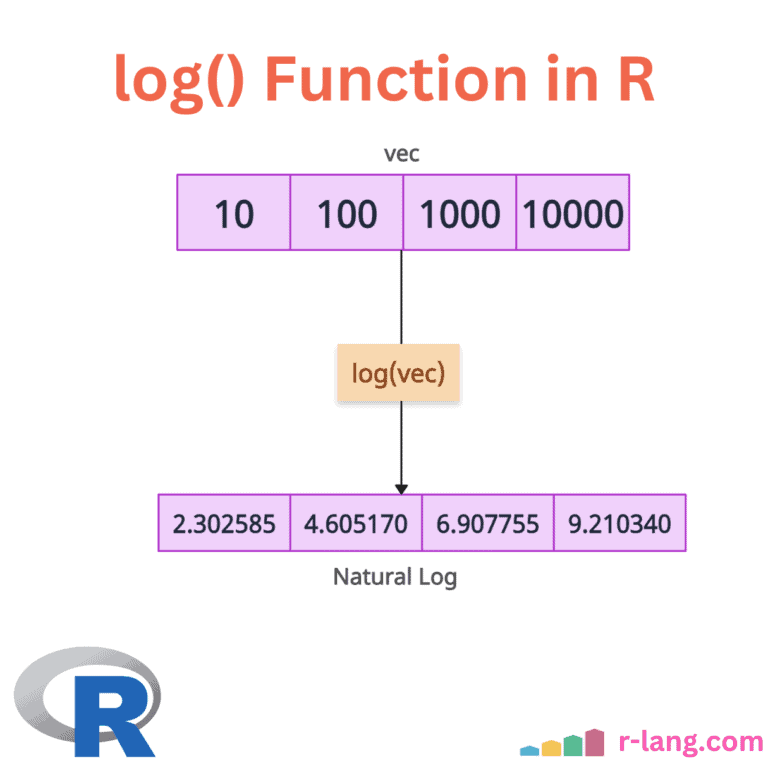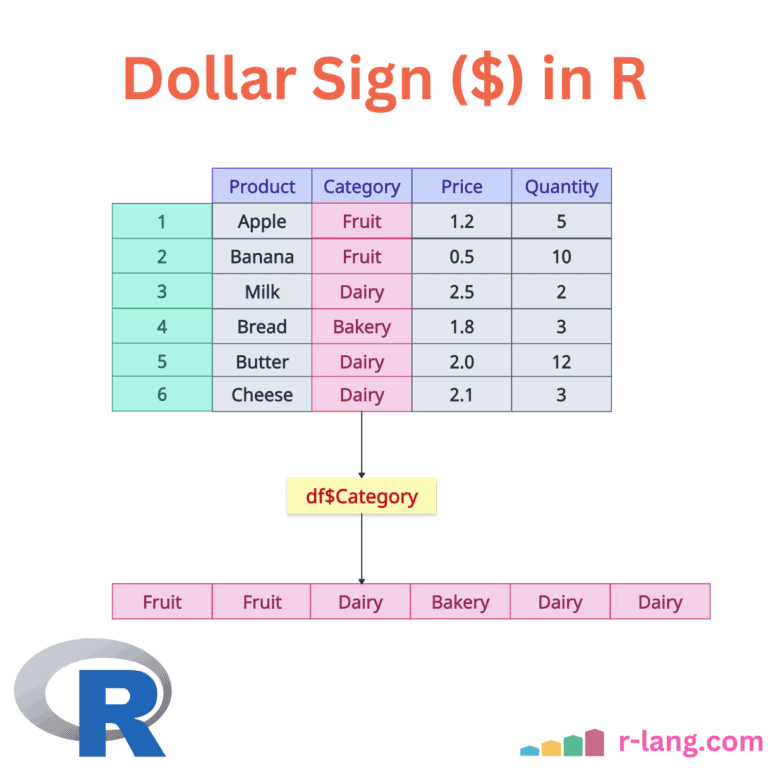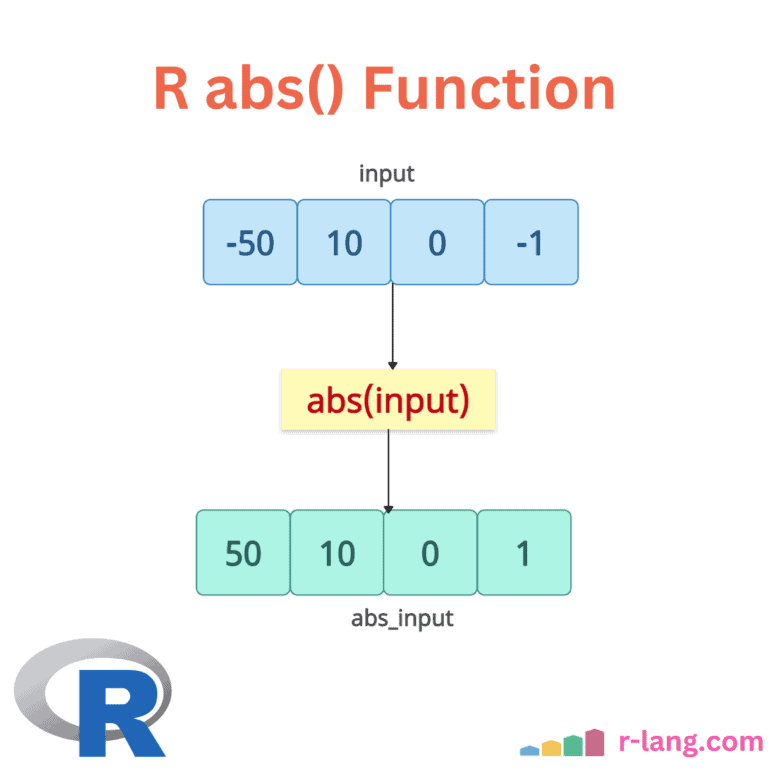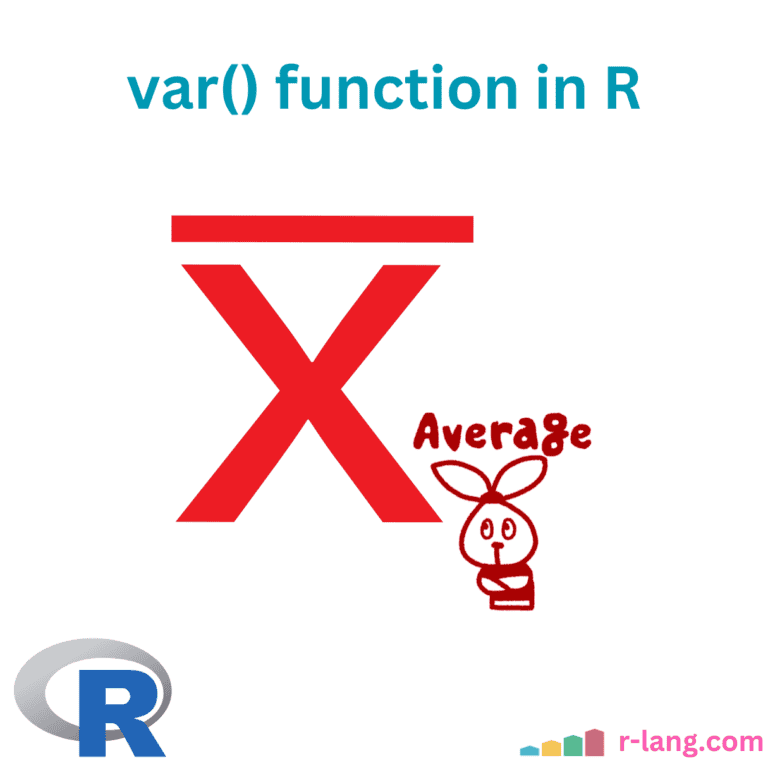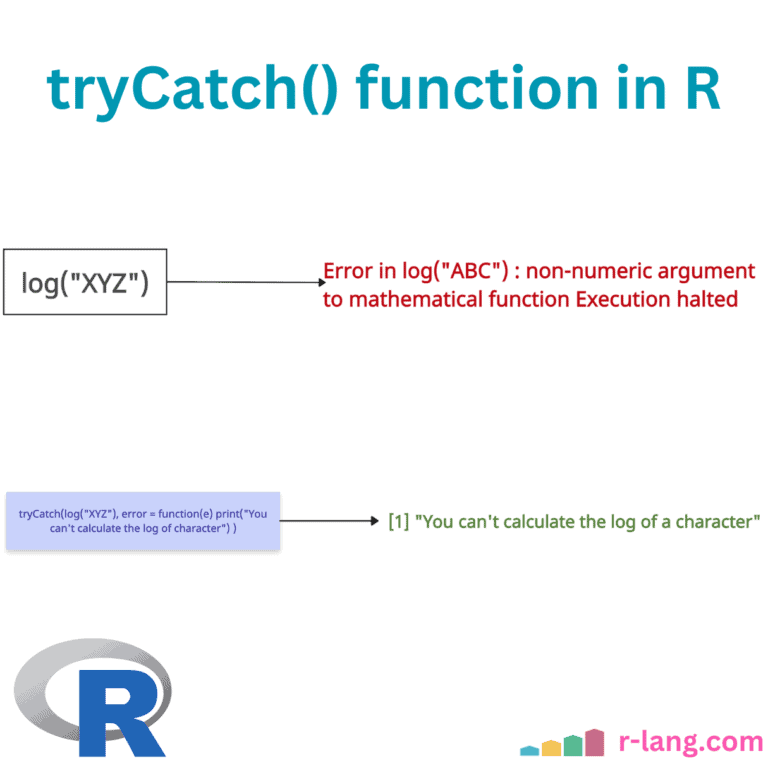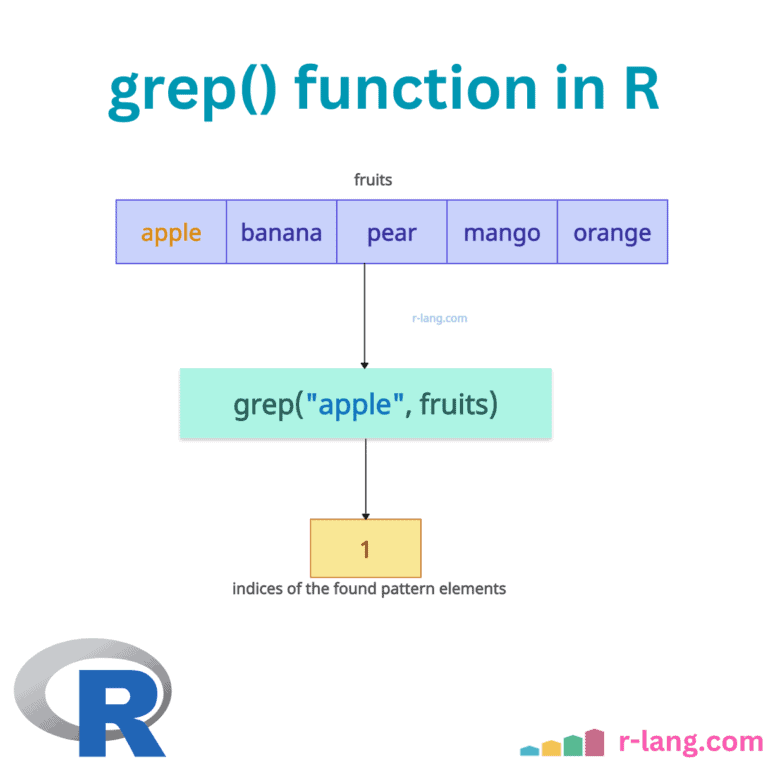Calculating Natural Log using log() Function in R
The log() function calculates the natural logarithm (base e) of a numeric vector. By default, it calculates natural log, but can also calculate to any base. The above figure shows that the output is the log of an input value 11. This method is mostly used in data scaling, mathematical transformation, and statistical modeling. Syntax … Read more

